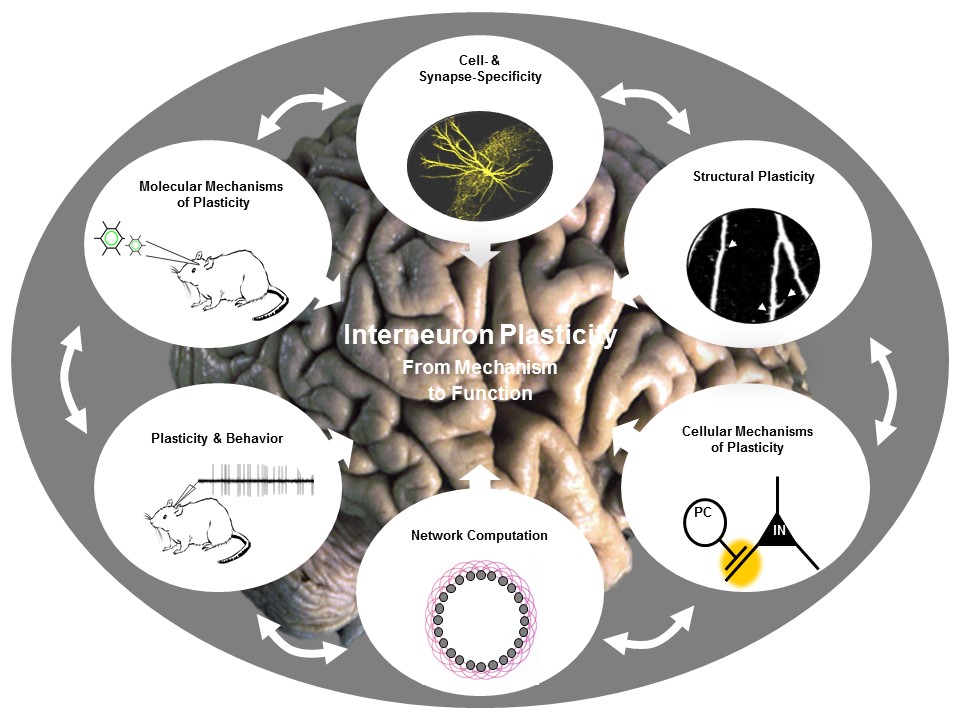Interneuron Synaptic Plasticity
From Mechanisms to Higher Brain Functions.
Profile
Second Funding Period
- Start second funding period: 01/2018
- Duration: 36 months
- DFG funding 3.19 Mio €
First Funding Period
- Title: Interneuron Synaptic Plasticity
- Subtitle: From Mechanisms to Functions
- Start: 01/2015
- Duration: 36 months
- DFG funding: 2,23 Mio €
![]()
A fundamental feature of the mammalian brain is its ability to acquire, store and recall novel information, which enables the individual organism to flexibly adapt to its changing environment. Memory formation dependents on the capacity of nerve cells to change the efficacy of their communication points, the synapses. These plastic changes depend on correlated neuronal activity of communicating neurons and are expressed as long-term potentiation (LTP) or the opposite long-term depression (LTD) of synaptic transmission. Almost 50 years ago synaptic plasticity was first identified at glutamatergic terminals in networks of excitatory principal cells (Hebb, 1949; Bliss & Lomo, 1973). Since then synaptic plasticity has been broadly accepted as the main cellular mechanism underlying learning and memory in the mammalian brain (Malenka, 2003; Feldman & Brecht, 2005). Recent investigations, including our own, demonstrated that plasticity also exists at glutamatergic synapses targeting GABAergic inhibitory interneurons (INs; Isaac et al., 2007; Kullmann & Lamsa, 2007; Lange et al., 2012; Topolnik, 2012). Moreover, an unexpected variety in the conditions and forms of IN plasticity has been identified (Kullmann & Lamsa, 2011), raising the possibility that IN plasticity could contribute to information processing in a very versatile, cell type- and synapse-specific manner. Therefore, in the proposed RU, we aim to decipher the contribution of IN plasticity to learning and memory in a dual approach. First, in a ‘bottom up’ approach, we aim to identify the main cellular and molecular mechanisms underlying synaptic plasticity in INs. Second, in a ‘bottom up’ approach we will develop and use new molecular tools to modulate some of the main molecular pathways underlying IN plasticity. In the 1st funding period of the research unit (RU) we successfully focused this approach on synaptic plasticity in parvalbumin-expressing persioma-inhibitory (PVI) and somatostatin-expressing dendrite-targeting interneurons (SOMIs). In the next funding period we aim to follow our initially set research lines and to particularly draw a causal link between IN plasticity, neuronal network activity and memory-relevant behaviour. To achieve this goal, we will combine in vivo and in vitro electrophysiology, neuroanatomy, in vivo imaging, molecular biology, optogenetics, behavioural and computational analyses in a concerted, integrative and causal manner.


